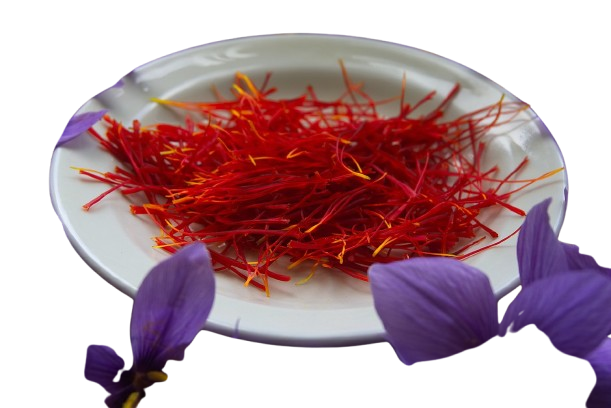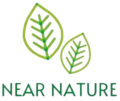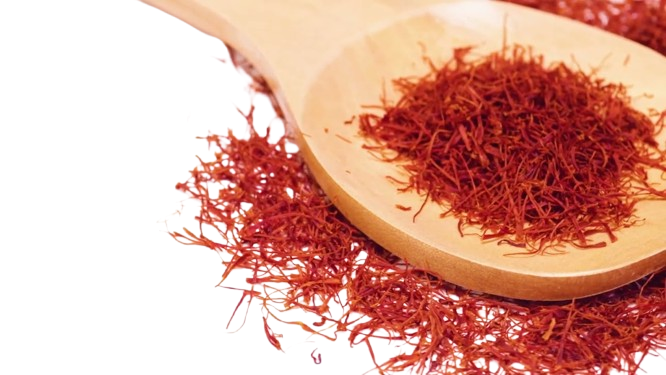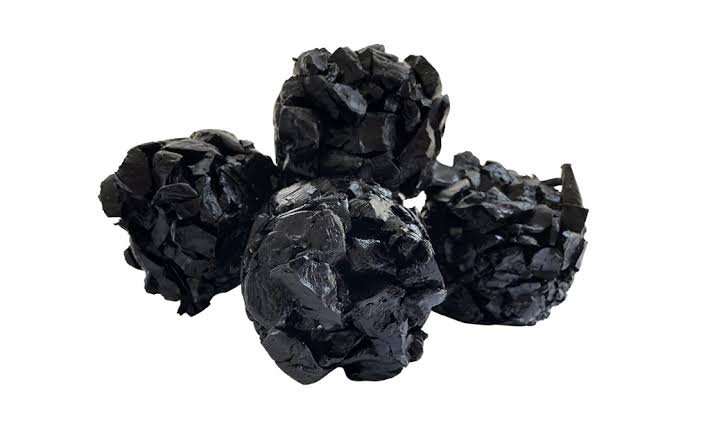What is Saffron?
Saffron in Pakistan is a highly prized spice derived from the flower of the Crocus sativus plant, commonly known as the saffron crocus. Each flower has three vivid crimson stigmas, which are carefully harvested and dried to create saffron strands. Known as the “golden spice,” saffron is renowned for its distinctive flavor, aroma, and vibrant yellow-orange color it imparts to dishes.
Saffron meaning in Urdu language is “Zafran”.
Key Characteristics:
- Appearance: Saffron strands are thin, thread-like structures with a deep red or crimson hue.
- Flavor and Aroma: It has a unique flavor profile, often described as slightly sweet, earthy, and floral, with a strong, hay-like fragrance.
- Color: Saffron is famous for its ability to impart a rich golden-yellow color to food and beverages.
Culinary Uses:
Saffron is a staple in various cuisines around the world, particularly in Mediterranean, Middle Eastern, and South Asian dishes. It is commonly used in:
- Paella: The traditional Spanish rice dish.
- Risotto alla Milanese: An Italian risotto flavored with saffron.
- Biryanis and Pilafs: Aromatic rice dishes from South Asia.
- Desserts and Sweets: Such as saffron-infused ice creams, custards, and cakes.
- Beverages: Like saffron tea, milk, and liqueurs.
Health Benefits:
Saffron is not only valued for its culinary uses but also for its numerous health benefits, which include:
- Rich in Antioxidants: Helping to combat oxidative stress.
- Mood Enhancement: Known for its potential antidepressant properties.
- Improved Cognitive Function: May aid in memory and learning.
- Heart Health: Contributes to lowering cholesterol and blood pressure.
- Anti-inflammatory: Helps reduce inflammation and pain.
- Digestive Aid: Promotes a healthy digestive system.
- Skin Benefits: Used in skincare for improving skin tone and texture.

Saffron Cultivation in Pakistan
Saffron, known for its high value and numerous benefits, has been traditionally cultivated in regions with specific climatic conditions, such as Iran, Spain, and Kashmir. However, saffron cultivation in Pakistan is gaining attention due to the country’s suitable growing conditions in certain areas.
Regions Suitable for Cultivation:
- Kashmir Valley: The region of Azad Jammu and Kashmir (AJK) has conditions similar to Indian Kashmir, making it ideal for saffron cultivation.
- Balochistan: Areas like Quetta and Ziarat have the cold winters and dry, warm summers necessary for saffron growth.
- Khyber Pakhtunkhwa: The northern areas with their specific climate also show promise for saffron farming.
Steps in Saffron Cultivation:
- Soil Preparation: Saffron thrives in well-drained, loamy soil with good organic content. The soil is plowed and cleared of stones and weeds.
- Planting Corms: Saffron is propagated from corms (bulbs). The corms are planted in late summer or early autumn, about 10-15 cm deep and 10-20 cm apart.
- Irrigation: Initially, the soil needs to be kept moist, but saffron plants do not require heavy watering. Over-irrigation can harm the corms.
- Harvesting: Saffron flowers bloom in late autumn. The delicate flowers are harvested early in the morning, and the stigmas (the saffron threads) are carefully separated and dried.
Challenges in Pakistan:
- Lack of Awareness and Expertise: Farmers need proper training in saffron cultivation techniques.
- Climate Variability: Climate changes and unexpected weather patterns can affect crop yields.
- High Initial Investment: The cost of corms and the labor-intensive nature of saffron farming require significant upfront investment.
Government and Research Initiatives:
The government and agricultural research institutions in Pakistan are promoting saffron cultivation. Programs to provide training, resources, and financial assistance to farmers are being implemented to boost saffron production.
Potential Benefits:
- Economic Uplift: Saffron has a high market value, which can significantly improve farmers’ incomes.
- Export Opportunities: With proper quality control, Pakistani saffron can compete in international markets, contributing to the country’s export earnings.
- Local Availability: Increased saffron production can meet local demand, reducing reliance on imports.
Conclusion:
While still in the nascent stages, saffron cultivation in Pakistan holds great potential. With the right support and investment, Pakistan could become a significant player in the global saffron market.
For more detailed information and updates on saffron cultivation initiatives in Pakistan, you can visit agricultural extension websites or local agricultural universities’ research publications.
How to Use Saffron in Pakistan
Saffron, known for its unique flavor, aroma, and color, can be used in various culinary and non-culinary applications. Here are some common methods to use saffron effectively:
Culinary Uses
- Infusion:
- Method: Crush a few saffron threads and soak them in a small amount of warm water, milk, or broth for at least 10-15 minutes.
- Usage: Add the infused liquid to dishes like rice, soups, stews, and desserts to impart a rich color and flavor.
- Example: This method is commonly used in dishes like paella, biryani, and risotto.
- Direct Addition:
- Method: Add a few saffron threads directly to the dish during cooking.
- Usage: This works well for long-cooking dishes where the saffron has time to release its flavors.
- Example: Adding saffron directly to slow-cooked dishes like stews or broths.
- Baking and Sweets:
- Method: Mix saffron with warm milk or water and add to the batter or dough.
- Usage: Used in baking bread, cakes, and cookies, as well as in sweet dishes like saffron ice cream and custards.
- Example: Saffron-infused milk in traditional sweets like kheer or ice cream.
- Tea and Beverages:
- Method: Steep saffron threads in hot water for a few minutes to make saffron tea, or add to other beverages.
- Usage: Saffron tea is known for its soothing properties, and saffron can also be added to cocktails and liqueurs.
- Example: Saffron tea or saffron-infused cocktails.
Non-Culinary Uses
- Skincare:
- Method: Mix saffron with honey, milk, or yogurt and apply as a face mask.
- Usage: Saffron is known for its skin-brightening and anti-inflammatory properties.
- Example: Saffron and honey face mask for a glowing complexion.
- Health Remedies:
- Method: Consume saffron-infused milk or tea.
- Usage: Saffron is believed to have various health benefits, including mood enhancement and improved digestion.
- Example: Drinking saffron milk for its antioxidant properties.
Tips for Using Saffron
- Quantity: Saffron is potent, and a little goes a long way. Typically, 5-10 threads are sufficient for most recipes.
- Storage: Store saffron in an airtight container in a cool, dark place to preserve its potency.
- Quality: Always choose high-quality saffron from reputable sources to ensure its effectiveness and flavor.
For more detailed information on using saffron in specific recipes or health applications, you can refer to culinary guides and health websites【16†source】 .
Saffron Facial Kit
A saffron facial kit is a luxurious skincare set designed to harness the natural benefits of saffron for radiant and glowing skin. Known for its anti-inflammatory, antioxidant, and complexion-enhancing properties, saffron has been used for centuries in beauty treatments. A typical saffron facial kit includes several products formulated to cleanse, nourish, and rejuvenate the skin.
Components of a Saffron Facial Kit:
- Cleansing Milk:
- Gently removes impurities and makeup.
- Leaves the skin feeling soft and refreshed.
- Scrub:
- Exfoliates dead skin cells.
- Promotes a smoother and brighter complexion.
- Massage Cream:
- Provides deep hydration and nourishment.
- Enhances blood circulation for a natural glow.
- Face Pack:
- Tightens and tones the skin.
- Reduces pigmentation and dark spots.
- Gel or Serum:
- Delivers concentrated nutrients.
- Targets specific skin concerns like dryness or dullness.
Benefits of Using a Saffron Facial Kit:
- Brightens the Skin: Saffron helps lighten and brighten the skin tone, giving a natural radiance.
- Anti-aging: Rich in antioxidants, saffron helps in reducing signs of aging such as fine lines and wrinkles.
- Soothes and Heals: Its anti-inflammatory properties calm irritated skin and help in healing blemishes.
- Improves Texture: Regular use results in smoother and softer skin.
- Reduces Dark Spots: Helps in fading dark spots and pigmentation for a more even skin tone.
How to Use a Saffron Facial Kit:
- Cleanse: Start with the cleansing milk to remove dirt and impurities.
- Exfoliate: Use the scrub to gently exfoliate the skin.
- Massage: Apply the massage cream and gently massage in circular motions to boost circulation.
- Apply Face Pack: Spread the face pack evenly and leave it on until it dries. Rinse off with lukewarm water.
- Finish with Gel/Serum: Apply the gel or serum to lock in moisture and nutrients.
Popular Brands Offering Saffron Facial Kits:
- VLCC: Known for their natural ingredient-based skincare products.
- Biotique: Offers an Ayurvedic approach to skincare with pure saffron extracts.
- Lotus Herbals: Combines modern science with traditional herbs for effective skincare solutions.
Incorporate a saffron facial kit into your skincare routine for a luxurious treatment that leaves your skin looking bright, youthful, and rejuvenated.
Saffron price in Pakistan is may very. its price is depend on quality , import country etc. 1 gram saffron price in Pakistan is starts from 1000 PKR. Buy Now


